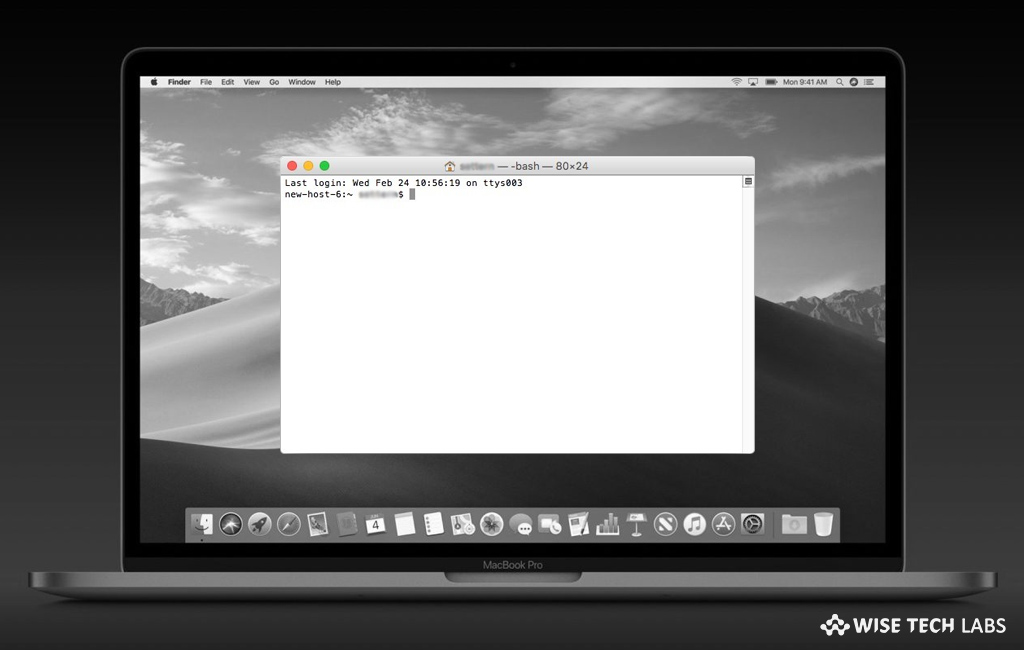

- Terminal find file mac how to#
- Terminal find file mac mac osx#
- Terminal find file mac code#
- Terminal find file mac free#
r is a "flag", allowing us to apply specific options to our comment. Rm -r FolderName removes the folder including all files and folders it contains (in this case, the folder is also located in our current working directory) Removing directories which contain files and/or folders is possible, but must be done with caution as you can cause severe damage to your system when removing wrong files or folders. So be careful when applying these commands! Important!: There is no way to bring back deleted files and folders. Rmdir FolderName removes the empty(!) folder in our current working directory Rm FileName.type removes the file referred to in the current folder (adding the path will delete the file in the respective folder) There are several ways to do this in bash from the terminal - depending on exactly what you want to find: Find files modified in the last 24 hours find / -mtime -1 -print Find files modified today (likely what you want) find / -newerct 'yesterday' -print or, using Spotlight mdfind date:today This can also be done from the GUI with Spotlight. (Disclaimer, I'm not on a Mac right now : ( so my exact instructions might be a little off). When I tried find, and used: find -name abc.dmg -path /, I got errors back. I've tried to use spotlight, but it doesn't find it.
Terminal find file mac mac osx#
Hit the little '+' icon (to the right of the 'save' button) Select File Type as a search criteria and select the correct one. How do I find a file by filename in Mac OSX terminal Ask Question Asked 12 years, 5 months ago Modified 10 months ago Viewed 798k times 280 I want to find a file on my Macbook with the filename: abc.dmg.

touch project/FileName.type.ĭeleting files or folders works as follows: Open a Find Window (cmd-f) or do a spotlight search and select 'show all'.
Terminal find file mac code#
Mkdir FolderName creates a new folder with the name specifiedīoth files and folders can also be created in specific directories when adding the corresponding path, e.g. Edit your commands like in a modern code editor with selections, cursor positioning, and completion menus. Launch Terminal by finding it in the Utilities folder or by searching for it using Spotlight, and then familiarize yourself with the interface. This is how you execute commands on your Mac using the command line. Touch FileName.type will create a new (empty) file with the name and type specified Your Mac comes with an app called Terminal under Applications > Utilities. In our case, when we use the keyboard combination Control + Option + Shift + T, it will open a new Terminal window. Then hit "Enter"/"Return" to open the Terminal.Besides navigation, file and folder creation is also possible in the terminal: Now we’ve got our Terminal shortcuts enabled, and we can use them anytime we’ve got the Finder open. On macOs, you can use Spotlight with keyboard shortcut ⌘ + Space and type Terminal.
Terminal find file mac how to#

And each record is made of fields separated by commas (or sometimes by semicolons " " or tabular keys). The MinIO Client mc command line tool provides a modern alternative to UNIX commands.
Terminal find file mac free#
And dedicated tools target data scientists so they are expensive and complex to use.Ī free alternative is to use your terminal and manage your big CSV file using the command line.Ī CSV file is a text file, with each line being a data record. Spreadsheet tools like Excel and Google Sheet break before reaching the million of lines. Few CSV editors can manage large CSV files.


 0 kommentar(er)
0 kommentar(er)
